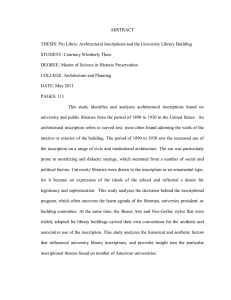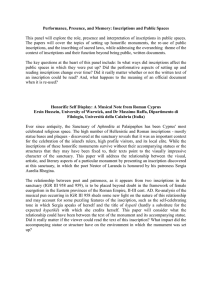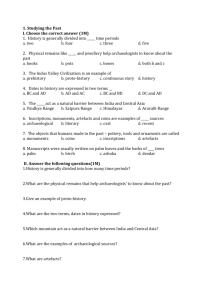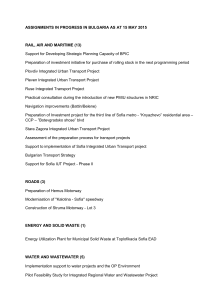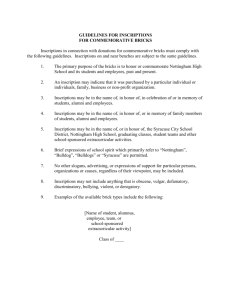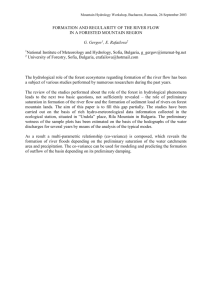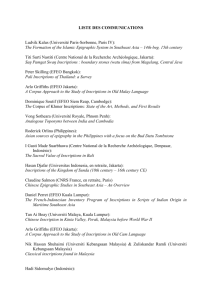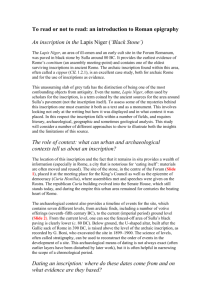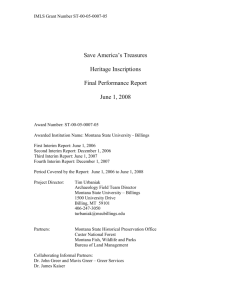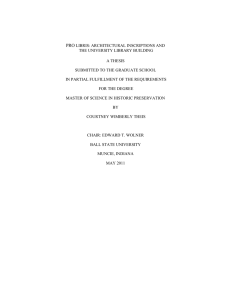inscriptions from the archaeological museum in sofia and their
advertisement
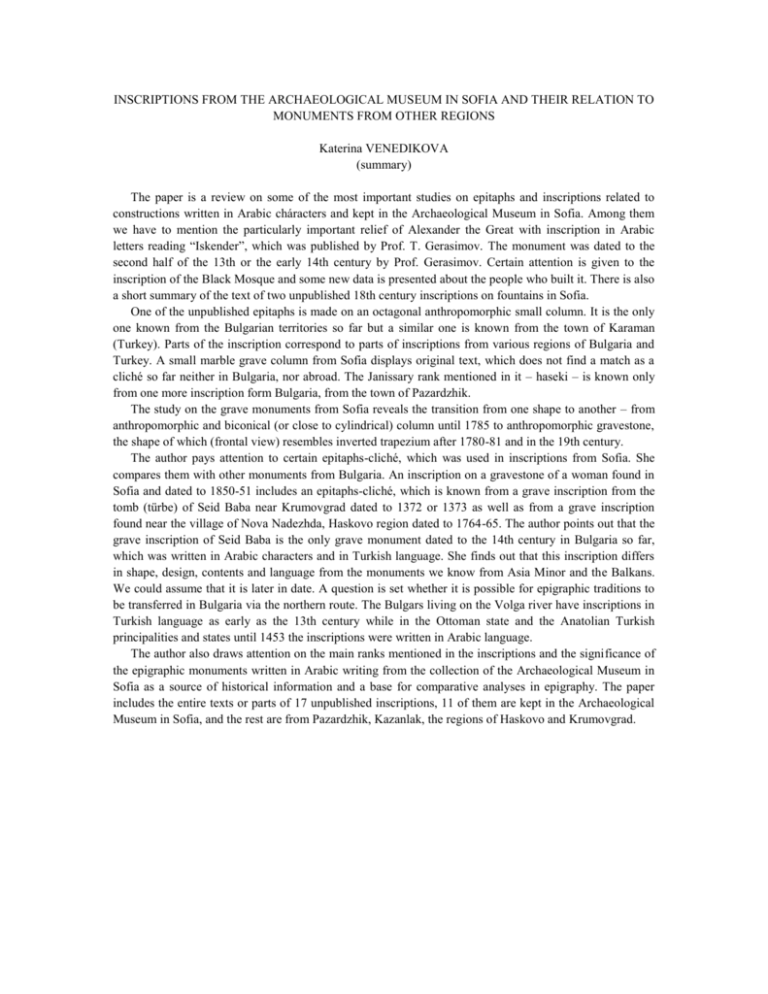
INSCRIPTIONS FROM THE ARCHAEOLOGICAL MUSEUM IN SOFIA AND THEIR RELATION TO MONUMENTS FROM OTHER REGIONS Katerina VENEDIKOVA (summary) The paper is a review on some of the most important studies on epitaphs and inscriptions related to constructions written in Arabic cháracters and kept in the Archaeological Museum in Sofia. Among them we have to mention the particularly important relief of Alexander the Great with inscription in Arabic letters reading “Iskender”, which was published by Prof. T. Gerasimov. The monument was dated to the second half of the 13th or the early 14th century by Prof. Gerasimov. Certain attention is given to the inscription of the Black Mosque and some new data is presented about the people who built it. There is also a short summary of the text of two unpublished 18th century inscriptions on fountains in Sofia. One of the unpublished epitaphs is made on an octagonal anthropomorphic small column. It is the only one known from the Bulgarian territories so far but a similar one is known from the town of Karaman (Turkey). Parts of the inscription correspond to parts of inscriptions from various regions of Bulgaria and Turkey. A small marble grave column from Sofia displays original text, which does not find a match as a cliché so far neither in Bulgaria, nor abroad. The Janissary rank mentioned in it – haseki – is known only from one more inscription form Bulgaria, from the town of Pazardzhik. The study on the grave monuments from Sofia reveals the transition from one shape to another – from anthropomorphic and biconical (or close to cylindrical) column until 1785 to anthropomorphic gravestone, the shape of which (frontal view) resembles inverted trapezium after 1780-81 and in the 19th century. The author pays attention to certain epitaphs-cliché, which was used in inscriptions from Sofia. She compares them with other monuments from Bulgaria. An inscription on a gravestone of a woman found in Sofia and dated to 1850-51 includes an epitaphs-cliché, which is known from a grave inscription from the tomb (türbe) of Seid Baba near Krumovgrad dated to 1372 or 1373 as well as from a grave inscription found near the village of Nova Nadezhda, Haskovo region dated to 1764-65. The author points out that the grave inscription of Seid Baba is the only grave monument dated to the 14th century in Bulgaria so far, which was written in Arabic characters and in Turkish language. She finds out that this inscription differs in shape, design, contents and language from the monuments we know from Asia Minor and the Balkans. We could assume that it is later in date. A question is set whether it is possible for epigraphic traditions to be transferred in Bulgaria via the northern route. The Bulgars living on the Volga river have inscriptions in Turkish language as early as the 13th century while in the Ottoman state and the Anatolian Turkish principalities and states until 1453 the inscriptions were written in Arabic language. The author also draws attention on the main ranks mentioned in the inscriptions and the significance of the epigraphic monuments written in Arabic writing from the collection of the Archaeological Museum in Sofia as a source of historical information and a base for comparative analyses in epigraphy. The paper includes the entire texts or parts of 17 unpublished inscriptions, 11 of them are kept in the Archaeological Museum in Sofia, and the rest are from Pazardzhik, Kazanlak, the regions of Haskovo and Krumovgrad.
